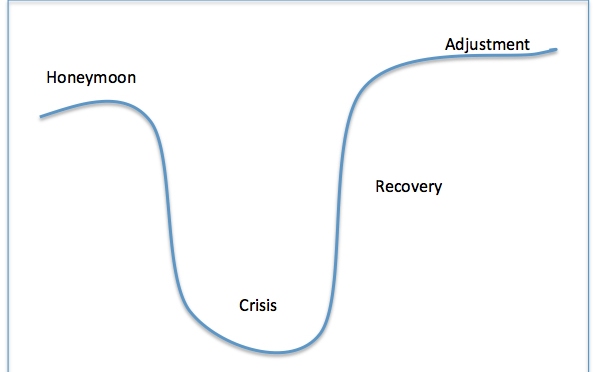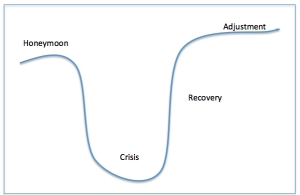*Warning: this post may contain graphic images and descriptions*
Often the first sign of culture shock appears in the digestive system–or, more accurately, in the products thereof. In the toilet. Bowel movements. Shit. Poop.
Cultural Adjustment Phases
The first stage of cultural adjustment is, of course, the honeymoon phase. This is when your bowels still believe they are in the home country. Everything is dandy and you have a cute little bowel movement in between fun, touristy activities in the host country. You foolishly think, this is great! Culture shock is for the weak! However, in the bowel movement adjustment process, the honeymoon stage can only last a period of 1-2 days, or approximately two new local meals in the host country (this period may be prolonged if you tend to eat in the hotel restaurant or the omnipresent McDonald’s.)
But here in the Peace Corps, we live with host families. This is fantastic, but it’s also an immediate immersion into the host country food.
Thus, the crisis phase hits, also cleverly referred to as “when shit hits the fan.” (author’s note: no fans were harmed during the writing of this blog.) The crisis phases has two distinct manifestations, known simply as “stop” and “go“.
Stop: An invisible perpetrator, the stop phase can take anywhere from two days to over a week (any longer, and you’re advised to seek medical attention.) The point of the “stop” phase is that nothing happens. However, the victim/traveler experiences side effects ranging from severe lower abdominal cramping to a strong desire to post bitter social media status updates about one’s bowels and the injustice of the world. Sometimes, the “stop” phase culminates in a temporal, accelerated “go” phase (see below.)
Go: The symptoms of the “go” are easily recognizable, with a timetable of roughly 10 minutes…repeatedly. After a meal, the traveler begins to exhibit distinctive facial expressions: first, intense concentration, then utter anguish, followed quickly by flat-out panic. This is accompanied by a full-body sweat and a tendency to break all cultural norms to sprint to the nearest facility. It’s important to note that some countries’ facilities are more supportive than others; it’s always a good idea to bring your own toilet paper and, in some cases, toilet seat.
The crisis phase can take anywhere from a few weeks to indefinite years, depending on the location, the traveler’s physical condition and their degree of curiosity. It’s important to identify triggers, such as eating food or drinking water, and establish a prevention plan, such as consuming only pre-packaged, preservative-ensured meals and drinking only Coca-cola products. Treatment plans should incorporate a simple, bland diet and a Netflix account.
For digestion rockstars, a final stage is attainable: the recovery and adjustment phase. To transition, the traveler must undergo repeated crisis phases until his or her intestinal tract adjusts to the triggers or an effective prevention strategy is discovered, often in lifetime supplies of Imodium and Miralax.
Three types of cultural adjustment emerge from the adjustment phase:
“Rejectors” view the culture negatively and withdraw emotionally and socially and, in the case of the bowel movement adjustment, culinarily. These are the people you find in Subway, Burger King and McDonald’s, the “safe zones.”
“Assimilators”, on the other hand, adjust to the culture by exchanging the home country cultural trends for the host country’s cultural elements, thereby losing their own culture. These are the people who swear they were born in the wrong country and all along, they were host-country nationals. While in country, they reject ties to the home country and pretend to love everything about the host country. They’re the ones claiming to adore those local dishes that even the locals avoid (I’m looking at you, sheep brain meatloaf, intestine soup and durian fruit!)
“Adapters” are thought to be the happy medium. These travelers embrace aspects of both the home and host cultures, utilizing a balanced approach to facilitate integration through compromise and collaboration. By selecting customs from both cultures, the adapters (and their digestive systems) successfully combine the successful elements of each side. These are the people who add new to the tried-and-true; this is my potato soup with bananas; this is my friend Jeremy’s patacon y tomate de arbol burgers.
As travelers face the bowel movement adjustment phases, it’s important to note that the process is inevitable and likely cyclical. As such, it’s best to view the stages as simply another rite of passage in the cultural integration process. And as any rite of passage, it could one day lead to a tongue-in-cheek blog post and a story for someone’s grandkids.
End note: This blog was inspired by my breakfast, as pictured below. It’s actually a delicious boiled banana with scrambled eggs! 🙂


